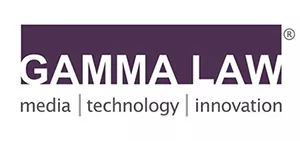- with readers working within the Advertising & Public Relations and Banking & Credit industries
- within Corporate/Commercial Law, Privacy and Technology topic(s)
- in United Kingdom
The UK Intellectual Property Office (UKIPO) has recently released updated trademark guidance that aims to shed light on the intricate world of non-fungible tokens (NFTs), virtual goods, and the metaverse. This comprehensive guidance seeks to provide much-needed clarity on the appropriate classification of these digital assets in the metaverse. Coincidentally, the International Trademark Association (INTA) has also recognized the significance of NFTs and the metaverse by publishing two white papers specifically addressing trademarks within these contexts.
Given the redoubled focus on intellectual property rights (IPR) law in light of the development of Web3 technologies, the question arises whether the United States Patent & Trademark Office (USPTO) should adopt a similar approach and issue guidance on the classification of NFT trademarks within the metaverse. Such guidance would undoubtedly serve the interests of trademark owners and applicants who are navigating this emerging landscape.
By establishing clear guidelines for trademark classification in the metaverse, the USPTO would ensure that the rights of trademark owners are adequately protected and enforced within this virtual realm. Moreover, with the proliferation of NFTs and virtual goods, there is a pressing need to develop a standardized framework that reflects the evolving nature of intellectual property assets in the digital age. USPTO should embrace a forward-thinking approach similar to those of the UK IPO and INTA, thus fulfilling its role as a trailblazer in the field of trademark classification and safeguarding the rights of brand owners in the metaverse and concerning NFTs.
Background
In April 2023, the UK Intellectual Property Office (UKIPO) issued important guidance regarding the classification of non-fungible tokens (NFTs), virtual goods, and services within the metaverse. As the metaverse gains prominence and these digital assets become more prevalent, the UKIPO's guidance provides clarity and establishes a framework for understanding their legal and intellectual property implications.
The guidance begins by defining and classifying NFTs, virtual goods, and services. NFTs are digital assets that represent ownership or proof of authenticity of a unique item or piece of content. Virtual goods encompass items or assets within the metaverse that possess value and can be bought, sold, or traded. Virtual services refer to digital services provided within the metaverse, such as the design, creation, or customization of virtual goods. UKIPO's guidance highlights the importance of considering intellectual property rights when dealing with NFTs, virtual goods, and services. Intellectual property rights, including copyright, trademark, and design rights, may be applicable to the creation, sale, or use of these assets. The guidance emphasizes the need for creators and users to understand and respect existing intellectual property laws and obtain necessary permissions or licenses when dealing with copyrighted works, trademarks, or other protected content.
According to the guidance, NFTs will not be accepted as a classification term alone, as "without an indication of the asset to which the NFT relates, the term is inherently vague." However, UKIPO would accept certain terminologies such as digital art, downloadable graphics, and downloadable software that is "authenticated by NFTs." UKIPO suggests analyzing the characteristics and functions of these assets to establish whether they should be treated as digital representations of real-world assets, standalone digital assets, or entirely virtual creations. The classification can influence various legal considerations, including taxation, consumer protection, and the applicability of existing intellectual property frameworks. The UKIPO's guidance emphasizes the need for compliance with relevant regulations, including data protection and consumer protection laws, when dealing with NFTs, virtual goods, and services. As these assets involve the collection and processing of personal data, creators, and platforms need to adhere to data protection requirements. Additionally, consumer protection laws should be considered to ensure transparency, fair trading, and appropriate redress mechanisms within the metaverse.
The guidance issued by UKIPO follows similar, albeit less extensive, guidance issued by the EU Intellectual Property Office (EUIPO) in June 2022. This guidance sets the main principles regarding goods and service classification for trademark applications covering NFTs. According to these guidelines, NFTs and virtual goods would be treated as digital content or digital visuals. However, since the sole term "NFT" or "virtual goods" does not sufficiently identify the subject of the registration, the content to which NFTs and virtual goods relate must be further specified in the application.
Aside from UKIPO and EUIPO, INTA has published two white papers about the metaverse and non-fungible tokens (NFTs), which call for harmonization of the classification of trademarks in these emerging digital ecosystems. These papers include specific recommendations to help brand practitioners keep pace in these fast-changing times. This paper recommends that the current approach of the USPTO and EUIPO of establishing Classes 9, 35, 41, and 42 as the main Nice Classifications to protect virtual goods/services should be considered when crafting filing strategies. Per this report, some stakeholders appear to be in favor of establishing a new Nice Class 46 for digital goods and services, while others have argued for virtual goods to be registered under the same classes as their non-virtual or physical goods counterparts. The report notes: 'These possible solutions, among others, should be studied by INTA committees to identify and establish the proper approach so that INTA can advocate on behalf of brand owners. The NFT report also recommends that INTA should develop model legislation that can be adopted by countries so that they could amend or adapt their existing frameworks to facilitate the commercialization of rights through NFTs. It further recommends that a global trademark dispute resolution policy (akin to the WIPO Uniform Domain Name Dispute Resolution Policy) should be adopted in collaboration with the World Intellectual Property Organization (WIPO) for the emerging digital ecosystems of NFTs and the metaverse.
USPTO's Approach On NFTs For Trademarks & Metaverse
The United States Patent and Trademark Office (USPTO) and the US Copyright Office recently initiated a joint study to examine intellectual property (IP) law and policy issues related to NFTs. This collaborative effort reflects the ongoing commitment of both offices to explore emerging technologies and their implications for IP rights. The study was prompted by a request from the U.S. Senate's Subcommittee on Intellectual Property, demonstrating the importance placed on understanding the impact of NFTs within the IP landscape.
To facilitate this study, the USPTO and the US Copyright Office published a Federal Register Notice in late 2022. The notice invited public comments on various IP issues and topics concerning NFTs. These public comments have since been the subject of several roundtable discussions, allowing for further analysis and in-depth conversations.
While the outcome of these consultations remains uncertain, it is worth noting that the recent guidance from UKIPO, EUIPO, and INTA regarding NFTs and trademarks in the metaverse may pave the way for the USPTO to issue its own guidance on NFTs. Considering the US's role as a major contributor to the development of the metaverse and its position leading NFT creation worldwide, the timing seems opportune for the USPTO to provide comprehensive guidance on the legal and IP considerations surrounding NFTs.
As the metaverse continues to evolve and gain traction, the USPTO's guidance on NFTs would serve multiple purposes:
- It would provide clarity on the legal framework for NFTs, enabling creators, platforms, and users to navigate the intricate IP landscape with confidence. Such guidance would help address questions related to copyright, trademark, and other IP rights in the context of NFTs.
- It would promote consistency and coherence in the treatment of NFTs across various jurisdictions, fostering international collaboration and facilitating cross-border transactions involving these digital assets.
- By offering guidance specific to NFTs, the USPTO would contribute to the protection of creators' rights and the prevention of IP infringements within the metaverse. This proactive approach aligns with the USPTO's mandate to foster innovation while ensuring fair and equitable protection for intellectual property owners.
Conclusion
It is unclear when the USPTO will issue formal guidance on trademarks in the metaverse and NFTs. Until then, the situation remains in limbo. Existing trademark holders likely would not be impacted in the near future should there be any changes in the classification. However, new registrants or applications would need to be cautious about the new categories as filing trademarks under the wrong classifications can have long-term consequences. Trademark filing under the wrong classification could hurt the reputational and commercial interests of potential trademark applications in this space. It is best to consult a qualified intellectual property lawyer with expertise in emerging technologies (especially metaverse and NFTs) before proceeding with trademark registration. Self-reliance can potentially be a costly mistake.
The content of this article is intended to provide a general guide to the subject matter. Specialist advice should be sought about your specific circumstances.


